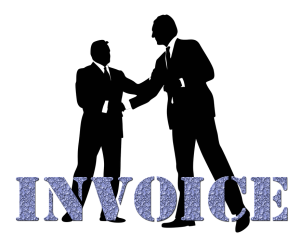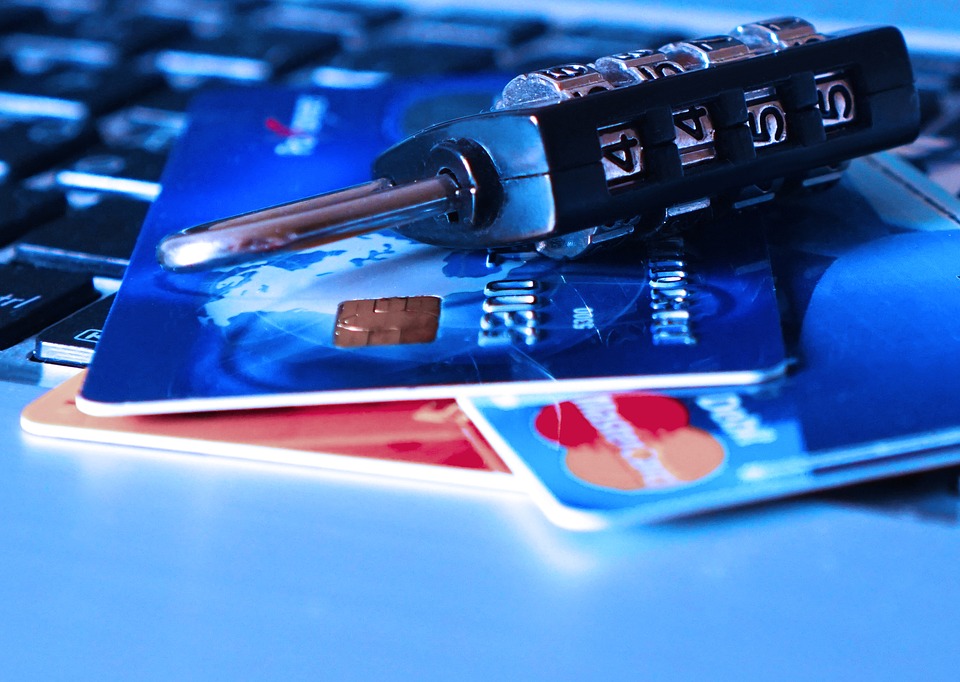
How to Void a Check Printed in a Previous Year
 Do you need to void a check printed in a previous year? Using Quickbooks, you can perform this task without it affecting your financial statements.
Do you need to void a check printed in a previous year? Using Quickbooks, you can perform this task without it affecting your financial statements.
Before you begin, you should create a backup of your Quickbooks company file. It’s always a good idea to create a backup whenever making changes to your checks such as this. If something goes wrong, you can restore the backup and start over. Hopefully, you won’t need the backup copy, but just having it gives peace of mind knowing that your sensitive data is safe in the event of an unforeseen problem.
To void a check printed in a previous year, log into your Quickbooks account to access and print the check. Next, go ahead and void it by following the steps outlined on Intuit’s help website here.
Next, you’ll need to recreate the check — only this time as a journal entry. This step is important because without a journal entry, there’s no record of the check; thus, it will affect your books. Open the check in the bank account register and press Ctrl+Y to open the Transaction Journal report. From here, click the File menu and choose “Print Report” to print the report. Next, click the File menu again and choose “Save as PDF.” This will save the report as a PDF file, which you can access later. Choose the Company menu and select “Make General Journal Entries.” In this newly created window, enter the date of the check in the respective date field.
From the “Account” drop-down menu, select the account from which the original check was debited. Enter an amount for the check in the “Debit” field, as well as a name for the check in the “Name” field. Next, enter the amount of the check in the “Credit” column. When you are finished, click “Save and New” to record the entry and exit the window.
Last but not least, go back and create a second journal entry, only this time reversing the values. When you are finished, go back and reconcile your account to ensure everything adds up. If your books are still off, you can always restore a backup copy of your company file, assuming you created one earlier. However, these steps should allow you to void a check from a previous date without it affecting your books.
Did this tutorial work for you? Let us know in the comments section below!

How to Change the Invoice Number in Quickbooks
 Looking to change the invoice numbers of invoices created in Quickbooks? While the invoice number doesn’t affect the contents or functionality of the invoice, it can still help business owners and accountants for reference purposes. Therefore, some users may want to create their own invoice numbers. Quickbooks allows users to change the numbers on their invoice in just a few simple steps. To learn more about invoice numbers and how to change them, keep reading.
Looking to change the invoice numbers of invoices created in Quickbooks? While the invoice number doesn’t affect the contents or functionality of the invoice, it can still help business owners and accountants for reference purposes. Therefore, some users may want to create their own invoice numbers. Quickbooks allows users to change the numbers on their invoice in just a few simple steps. To learn more about invoice numbers and how to change them, keep reading.
To change the invoice number in Quickbooks Online — the cloud-based accounting solution by Intuit — log into your account and click the Gear icon in the upper-right corner, followed by “Account and Settings” > “Sales,” > and under “Sales From Content” click the option titled “Custom Transaction Numbers,” followed by “Save.” After enabling this feature, you can click on the right invoice number to define the number for future use. All new transactions will automatically populate using the numbers in that sequence. Sorry if you were expecting more, but that’s all it takes to change the invoice number in Quickbooks!
So, what if you need to delete an invoice? Well, this is also something that can be accomplished in just a few quick and easy steps. First, find the invoice in your Quickbooks account. After double-checking to ensure it’s the correct invoice, click the “More” link at the bottom of the invoice, followed by “Delete.” Quickbooks will ask you to confirm the deletion. Assuming you choose “Yes,” it will delete the invoice you just opened.
Keep in mind that when you delete an invoice, it’s gone. The only record that will remain is a copy in the Audit Log, which you can access if needed.
To recap, you can easily chance the invoice numbers in Quickbooks under the “Account and Settings” option. There’s an option here that allows users to choose Custom Transaction Numbers instead of the predefined numbers. Invoice numbers don’t affect any functionality or other important element of the invoice. Rather, they are used for reference purposes. However, that doesn’t mean they are useless. Invoice numbers are an important part of accounting, with business owners and accountants using them to keep track of transactions. Hopefully, this give you a better understanding of invoice numbers in Quickbooks and how to change them.
Did this tutorial work for you? Let us know in the comments section below!

How to Delete a Payment from a Deposit
 Do you need to delete one or more payments from a deposit?
Do you need to delete one or more payments from a deposit?
It’s not uncommon for Quickbooks users to accidentally enter the wrong sale value. If the value is supposed to be $100, for instance, but you accidentally entered $50, you’ll need to go back and fix it. The good news is that fixing such errors is a relatively easy and painless process that should only take a few minutes. Keep reading for a step-by-step walkthrough on how to delete a payment from a deposit.
When you are ready to delete a payment from a deposit, log into your Quickbooks account as the administrator and open the respective deposit, at which point you can select and highlight the line you wish to delete, followed by choosing the option to delete the line from the “Edit” menu. If you click the “Edit” menu, you choose an option to delete the highlighted line. When you are finished, save the deposit, make your change, then go back and add the payment to the deposit. Sorry if you were expecting more, but that’s all it takes to delete a payment from Quickbooks!
Now that you know how to delete a payment from Quickbooks, you might be wondering how to add it back. If you accidentally deleted the wrong payment, you’ll need to add it back, in which case you can follow these steps. Open the deposit, and then highlight the line you want to delete and then pick the option to delete the line from the Edit menu. Save the deposit, make your change, and then add the payment back to the deposit.To recover a deleted deposit, you basically need to recreate it. This is done by logging into your account and choosing the “Create (+)” icon, followed by “Bank Deposit.” From here, choose “Existing Payments” and then select the box to the left at the end of each transaction and click “Save.” In doing so, you’ll recreate the deposit.
Whenever you want to create a deposit only to discover that you don’t need something on the deposit, you can just remove the item. This is done by pulling up the deposit, unselecting the box to the left end, and then saving. Basically, this keeps everything on the deposit except for the item or items that you just unselected.
Hopefully, this tutorial helps!
Did this tutorial work for you? Let us know in the comments section below!

How to Restore a Company File in Quickbooks
 Looking to restore a company file in Quickbooks? Intuit’s long-running and highly popular suite of business accounting software uses “company files” on which to store all of the respective user’s information. Featuring the file extension .QBW, it contains everything from financial data and transactions, to templates, letters, logos, images and more. Not to be confused with .QBB files, .QBW files are the core files on which all of your information is stored. .QBB files, on the other hand, are backups of the .QBW file.
Looking to restore a company file in Quickbooks? Intuit’s long-running and highly popular suite of business accounting software uses “company files” on which to store all of the respective user’s information. Featuring the file extension .QBW, it contains everything from financial data and transactions, to templates, letters, logos, images and more. Not to be confused with .QBB files, .QBW files are the core files on which all of your information is stored. .QBB files, on the other hand, are backups of the .QBW file.
Before we begin, it’s important to note that converting an older company file into a newer version prevents it from being opened in an earlier version. If you wish to open and access an older company file, and you made a backup of the file before the conversion, you’ll have to restore the old backup file in the earlier version of Quickbooks. Furthermore, you’ll also have to reenter any information in Quickbooks that occurred since the conversion.
To restore your Quickbooks account, log into your account as the administrator and choose “Open or Restore a Backup Copy,” followed by “Next.” From here, choose “Local Backup,” followed by “Next.” Scroll down to the “Look In” drop-down menu and choose the location of your backup file (e.g. where it’s stored on your computer or storage device). Once you’ve selected the backup file, choose “Open,” followed by “Next.”
Next, click the “Save-in” drop-down menu and select the location on your computer where you want to restore the file. You’ll then be asked to enter a new file name for the company file, giving it a .QBW extension as mentioned above. Click “Save,” read the messages on screen, and continue with the restoration process. Quickbooks performs the restoration in just a few minutes for a typical account, so it shouldn’t take long.
Keep in mind that when restoring a company file with assisted payroll, you may receive an additional message saying: “This QuickBooks file may be missing some of the payroll data that you have already sent to the Payroll Service. Before creating any new transactions, you need to restore the missing data by clicking Send Payroll Data from the Employees menu and then clicking the Send button.” To resolve this issue, click “Send” if the “Items to Send” field contains a $0 balance.
Did this tutorial work for you? Let us know in the comments section below!

How to Stop Quickbooks From Opening Automatically
 Does Quickbooks automatically launch when you start your computer? This is completely normal and should cause no reason for concern. Intuit made the Quickbooks Desktop version with an auto-launch feature, allowing business owners to access their accounts more easily. Rather than manually finding and opening the software, it launches itself whenever the computer is started or rebooted. But not every user prefers this feature; some prefer to launch Quickbooks manually instead. So, how do you stop Quickbooks from opening automatically?
Does Quickbooks automatically launch when you start your computer? This is completely normal and should cause no reason for concern. Intuit made the Quickbooks Desktop version with an auto-launch feature, allowing business owners to access their accounts more easily. Rather than manually finding and opening the software, it launches itself whenever the computer is started or rebooted. But not every user prefers this feature; some prefer to launch Quickbooks manually instead. So, how do you stop Quickbooks from opening automatically?
You might be wondering why anyone would even want to disable this feature in the first place. Well, for starters, it consumes computer resources, such as processing power and random access memory (RAM). Depending on the hardware and other applications running, this could bog down its resources while causing significantly slow speeds. By disabling unnecessary programs from starting automatically, including Quickbooks, you can prevent these “bottlenecks” from occurring on your computer.
To disable Quickbooks from starting automatically, you’ll need to press the Windows key on your keyboard, followed by Task Manager > Startup > Quickbooks Desktop > Disable. After ticking the option to disable Quickbooks from starting automatically, go ahead and restart your computer. Once your computer has restarted, Quickbooks should no longer launch itself. Sorry if you were expecting more, but that’s all it takes to disable Quickbooks from launching automatically
It’s important to note, however, that the steps needed to disable Quickbooks from launching automatically are slightly different if the software is installed on a computer with the operating system Windows 7 or Windows Vista. If your computer runs either of these older versions of Windows, you’ll need to disable Quickbooks from launching upon startup by clicking the Start button on your computer, followed by Programs (or All Programs for Vista). Next, right-click the Startup folder and select “Open.” From here, right click the file named “QBW32.exe and click Delete. Don’t worry, this file has no impact on your actual Quickbooks account or transactions. Rather, it’s used specifically to launch the software automatically upon startup. By deleting the file, you’ll essentially disable this feature.
After deleting the “QBW32.exe” file, reboot your computer, at which point Quickbooks should no longer launch automatically. If you want to reactivate this feature for any reason, simply repeat the steps. For computers running Windows Vista or Windows 7, restore the deleted “QBW32.exe” file.
Did this tutorial work for you? Let us know in the comments section below!

How to Handle Non-Sufficient Funds from a Customer
 As a business owner, you’re bound to encounter a non-sufficient funds (NSF) transaction at some point in time. When a customer attempts to pay and he or she doesn’t have the necessary amount of funds in their account, the transaction will be declined while showing as “NSF.” So, what’s the correct way to deal with a NSF when using the Quickbooks accounting software? Keep reading for a step-by-step walkthrough.
As a business owner, you’re bound to encounter a non-sufficient funds (NSF) transaction at some point in time. When a customer attempts to pay and he or she doesn’t have the necessary amount of funds in their account, the transaction will be declined while showing as “NSF.” So, what’s the correct way to deal with a NSF when using the Quickbooks accounting software? Keep reading for a step-by-step walkthrough.
Assuming you use single-user mode for Quickbooks, you can record NSF manually by logging into your account and choosing Customers > Customer Center > Transaction > Received Payments, at which point you should double-click the failed payment. Next, on the “Receive Payments” window, click the option titled “Record Bounced Check” to match the main ribbon tab.
There are a few steps left in the process, however. After checking the option to “Record Bounced Check,” go to the “Manage Bounced Check” window and enter the bank fee (e.g. how much the bank charged for the NSF), as well as the date of the failed transaction, class and customer fee (how much you charge the customer). Keep in mind that these fields are optional — you can record NSF transactions without entering this information. By including this information, however, you’ll have an easier time finding and tracking all of your NSF transactions. Therefore, it’s recommended that you fill it in.
When you are finished, click “Next.” This should reveal a new window for the “Bounced Check Summary,” including all of your respective information such as unpaid invoices, the fees associated with those invoices, and the new invoice for the customer who submitted the failed transaction. Double-check the information listed here, and assuming it’s correct,” click “Finish” to complete the process. This will reveal a “Bounced Check” indicator on the customer’s payment, indicating that you just used the feature for the customer’s payment.
It’s important to note that Quickbooks automatically creates a journal entry for debiting your accounts receivable and crediting your bank account. It will be marked as “unpaid,” so re-invoice the customer later.
Hopefully, this gives you a better understanding of how to record NSF transactions in Quickbooks. It’s not someone most business owners want to deal with, but NSFs do occur. When it does, you can follow these steps to properly record and manage it in your Quickbooks account.
Did this tutorial work for you? Let us know in the comments section below!

How to Change Default Email Message in Quickbooks
 Want to change the default message of your emails created in Quickbooks? If you’re a business owner, you probably want to make your emails look as professional as possible. By default, Quickbooks automatically completes email fields like the subject line, recipient’s name and other elements. In some cases, this is perfectly fine. In other cases, though, you can achieve a more professional-looking email by modifying these elements yourself. So, how do you change the default email message in Quickbooks?
Want to change the default message of your emails created in Quickbooks? If you’re a business owner, you probably want to make your emails look as professional as possible. By default, Quickbooks automatically completes email fields like the subject line, recipient’s name and other elements. In some cases, this is perfectly fine. In other cases, though, you can achieve a more professional-looking email by modifying these elements yourself. So, how do you change the default email message in Quickbooks?
Thankfully, Quickbooks makes changing the default email template a breeze. After logging into your Quickbooks account, choose Edit > Preferences > Send Forms > Company Preferences. From here, you can change the default email templates for forms and reports. If you want to add an invoice number to your invoices’ subject lines, for instance, simply click on “Change default for Invoices.” This will bring up several different email templates from which you can choose.
You’ll also notice a field to include your own verbiage in the body of your invoice emails, or you can even add a BCC email address if you want a copy sent back to your or someone who works for you. This area of the Quickbooks interface allows users to change email templates for many forms and reports, some of which include invoices, estimates, statements, sales orders, sales receipts, credit memos, purchase orders, reports, pay stubs, overdue invoices, invoices approaching due date.
But what if you want to change the signature of your emails? Well, this is also a feature supported by Intuit’s long-running and highly popular line of business accounting software.
To change your default email signature, log back into your Quickbooks account and choose the Gear icon at the top right, followed by Your Company > Account and Settings > Sales > Messages. In the field titled “Default email message send with sales forms,” click the drop-down menu next to the “Sales” form box and select “Invoice.” From here, you can update your email signature in the “Email message” box. When you are finished, click “Done.” Congratulations, you’ve just changed your default email signature!
Keep in mind that nuances between Quickbooks Online and Quickbooks Desktop may result in different steps for changing the default email message. The steps listed above, however, should guide you in the right direction. If you still need assistance, seek help from your respective hosting provider.
Did this tutorial work for you? Let us know in the comments section below!

How to Find Unapplied Payments in Quickbooks
 It’s not uncommon for business owners to receive payments, only to leave them unapplied in their Quickbooks account. Without applying a payment, however, it’s not going to show up correctly, in which case you’ll need to fix it ASAP. The good news is that Intuit’s popular line of accounting software offers a quick and easy feature to find and apply these payments. So if you’re dealing with one or more unapplied payments in Quickbooks, keep reading for a step-by-step walkthrough on how to fix it.
It’s not uncommon for business owners to receive payments, only to leave them unapplied in their Quickbooks account. Without applying a payment, however, it’s not going to show up correctly, in which case you’ll need to fix it ASAP. The good news is that Intuit’s popular line of accounting software offers a quick and easy feature to find and apply these payments. So if you’re dealing with one or more unapplied payments in Quickbooks, keep reading for a step-by-step walkthrough on how to fix it.
To apply an unapplied payment, go ahead and log into your Quickbooks account. From the main menu, click the Creative Invoice option under the Customers heading, after which you should fill out the requested information. Applying an unapplied payment requires an invoice, so you’ll need to create an invoice for the customer whom gave you this payment. When you are finished, click Save to complete the changes, followed by “Receive Payments.”
Next, choose Credits under the Receive Payments options, followed by Unapplied Payment. Click Save and Close and you are finished! The payment should now be applied to your account, at which point you should find it under “Closed.”
Now that you know how to apply an unapplied payment in Quickbooks, you might be wondering how to clear an overpayment. We’re only human, so mistakes are bound to happen. But overpayments can throw off your books, so you’ll need to fix them as well.
If a customer accidentally overpaid you, you’ll need to issue a refund. This is done by opening the credit memo you want to use for the refund > click Refund at the top of the window > double-check to ensure all of the information displayed is correct (leave Accounts Receivable as the account in the details area for proper refunds) > click OK.
You aren’t out of the woods just yet. Even after recording both the credit memo and check, you’ll need to connect the check to the credit memo so that Quickbooks can track it correctly. This is done by choosing Customers > Receive Payments > enter the customer to whom you want to issue the refund > choose the option titled “Apply Existing Credits” > on the Refund line, enter the check amount in the payment column.
Did this tutorial work for you? Let us know in the comments section below!
How to Fix an Incorrect Deposit in Quickbooks
 So, you accidentally recorded an erroneous deposit in Quickbooks, and now you’re trying to fix it? We’re only humans, so mistakes such as this are bound to happen sooner or later. But even a single erroneous transaction can throw off your entire books, which is why it’s important to fix them ASAP. Follow the steps listed below to fix incorrect deposits in Quickbooks.
So, you accidentally recorded an erroneous deposit in Quickbooks, and now you’re trying to fix it? We’re only humans, so mistakes such as this are bound to happen sooner or later. But even a single erroneous transaction can throw off your entire books, which is why it’s important to fix them ASAP. Follow the steps listed below to fix incorrect deposits in Quickbooks.
It’s important to note that there are two instances that can cause payments and receipts to end up missing from your Bank Deposits section in Quickbooks. This includes entering the wrong deposit option (e.g. fund were deposited directly to your bank account), or they were added to the wrong deposit by accident. Either way, it’s frustrating when you check on a deposit, only to find that it’s no longer in your account.
First and foremost, you’ll need to find the incorrect deposit in your Quickbooks account. If it was a payment in an Invoice, log into your Quickbooks account and choose Transaction > Sales, after which you should choose the correct payment or sales receipt, double-check to ensure it is marked Deposit to Undeposited funds, and click Save.
But if you marked the payment correctly, you’ll need to check for the word “Deposit: Amount of $$$ on [date],” which occurs below the deposit options. This indicates the money was already deposited into the respective account. Now, if this is the deposit that you entered incorrectly, you’ll need to fix it by clicking the date listed, after which you’ll see a new window for the Bank Deposit options. You can click this field to open the deposit screen and clear the erroneous information, followed by Save to complete the changed. This should bring you back to the payment/sales receipt, or register, after which you should click Save one more time. Return to the Bank Deposit screen and add the payment again, but this time using the correct information.
Following the steps outlined above should set you on the right path to fixing your incorrect deposit. Ideally, you should double-check your deposits before making them to ensure they are correct. Going over the information two or even three times is guaranteed to minimize errors such as this. However, mistakes are bound to happen. And when you make an incorrect deposit, you’ll need to fix it by following the advice listed here.
Did this tutorial work for you? Let us know in the comments section below!
Dealing with Damaged Data in Quickbooks
 Have you encountered damaged data in your Quickbooks account? If so, you should take the necessary steps to find and fix the problem. Damaged damage can prevent otherwise essential tasks from occurring, such as matching your books with your financial transactions. So, follow these steps to repair damaged data in Quickbooks.
Have you encountered damaged data in your Quickbooks account? If so, you should take the necessary steps to find and fix the problem. Damaged damage can prevent otherwise essential tasks from occurring, such as matching your books with your financial transactions. So, follow these steps to repair damaged data in Quickbooks.
Before we begin, it’s important to note that you should create a backup of your company file. This reduces the risk of data loss while giving you peace of mind knowing that if you make a mistake — or if you accidentally delete an important item — you’ll still have all of your necessary account information.
When you’re ready to begin, go ahead and log into your Quickbooks account to run the Rebuild Data Utility. As you may already know, this tool is designed to identify and fix common problems associated with Quickbooks. Intuit recommends using it whenever you are prompted to by a the program, or when a Help or knowledge page suggests you do so.
To rebuild your data, access File > Utilities > Rebuild Data, at which you should choose “OK” when a message displays asking you to back up your company file. Keep in mind that your computer may also display a message saying “Quickbooks is not responding,” although this should go away within a few minutes. Be patient and wait for Quickbooks to finish processing the Rebuild Data tool. When it’s finished, you’ll see a new message appear saying “Rebuild has completed.” You should then run the Verify Data tool to check and see if there’s any remaining data damaged.
Of course, if this doesn’t work, you can always restore a backup copy of your Quickbooks company file. Simply insert the disk or drive into your company and access File > Open or Restore Company, at which point Quickbooks should launch the wizard tool. Choose “Restore a backup copy” and proceed by clicking “Next.” Click “Local backup,” followed by Next. This should open a new window, at which point you can choose the location of your backup file and click “Open.” Proceed with the on-screen instructions and Quickbooks will begin to restore your backup company file. Sorry if you were expecting more, but that’s all it takes to restore a backup company file in Quickbooks!
Did this tutorial work for you? Let us know in the comments section below!
